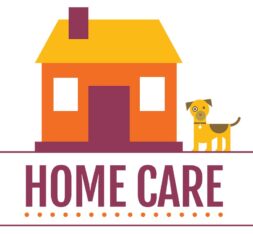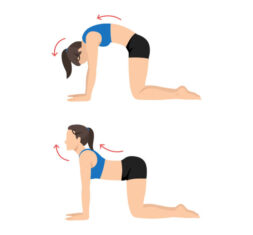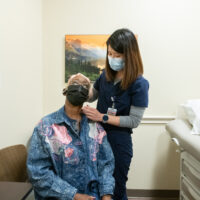Low back pain is hands down one of the most common ailments of our time. Nearly everyone will experience it at one point or another. The good news is that most back pain can be treated at home with some lower back pain self care.
Of course, there are times when back pain requires a trip to the ER. Read When is back pain an emergency?
This guide covers:
- What are common causes of low back pain?
- When should I use lower back pain home remedies?
- What to do and not do to treat lower back pain at home
- Is ice or heat better for lower back pain?
- Is ibuprofen or acetaminophen better for treating back pain?
- Should I exercise or avoid activity when I have back pain?
- Will marijuana relieve chronic back pain?
- Is massage or acupuncture good for relieving back pain?
- Should I see a chiropractor for my back pain?
- When should I see a back pain doctor?
What are common causes of low back pain?
Lower back pain is a common condition that affects people of all ages. It has a variety of causes, ranging from poor posture to serious medical conditions. The most common causes of lower back pain include:
- Muscle or ligament strain. The most common cause of lower back pain, strains occur when muscles or ligaments become stretched or torn. This can happen gradually from overuse or suddenly, such as from lifting a heavy object or making a sudden movement.
- Herniated or bulging discs. This occurs when the jelly-like center of a spinal disc pushes through a tear in the outer layer and irritates nearby nerves.
- Spinal stenosis. Typically associated with aging, this condition is when the spinal canal narrows and puts pressure on the spinal cord and nerves.
- Osteoarthritis. This is a degenerative disease that can affect any of the joints in the spine but most commonly occurs in the low back.
- Osteoporosis. This is a condition in which the bones become weak and brittle, which can lead to fractures anywhere along the spine, but most frequently in the low back.
When should I use lower back pain home remedies?
As long as you don’t have any red flag back pain symptoms that would necessitate a trip to the emergency department, it’s typically safe to begin lower back pain home remedies as soon as you start experiencing discomfort. Beginning lower back pain self care right away has two benefits. First, you’ll likely find relief since the majority of low back pain can be treated at home without further intervention.
 The other benefit comes in the event you do need medical treatment. Most insurance plans require that patients try conservative treatment, including lower back pain self care such as the use of non-steroidal anti-inflammatory drugs (NSAIDs) and physical therapy for six weeks prior to approving diagnostic imaging. The American Association of Neurological Surgeons and Congress of Neurological Surgeons recommends against imaging like x-Rays or MRI for non-specific acute pain. That means, the sooner you begin lower back pain home remedies, the sooner you may be able to get the treatment you need.
The other benefit comes in the event you do need medical treatment. Most insurance plans require that patients try conservative treatment, including lower back pain self care such as the use of non-steroidal anti-inflammatory drugs (NSAIDs) and physical therapy for six weeks prior to approving diagnostic imaging. The American Association of Neurological Surgeons and Congress of Neurological Surgeons recommends against imaging like x-Rays or MRI for non-specific acute pain. That means, the sooner you begin lower back pain home remedies, the sooner you may be able to get the treatment you need.
What to do and not do to treat lower back pain at home
There are lots of options when it comes to lower back pain self care, and what works for one person might not necessarily work for another. Similarly, even if one type of lower back pain self care technique worked for you in the past, you might need to try something different next time.
In general, though, most cases of low back pain can be relieved with some combination of over-the-counter pain relievers, hot/cold therapy, and gentle movement and stretching.
Is ice or heat better for lower back pain?
If your back pain is a result of an acute injury, such as a sports injury or a fall, icing the area can help calm inflammation, which is often a source of low back pain. But lots of patients find that heat, particularly wet heat such as a hot shower, to be more soothing in the moment. Ideally, lower back pain self care would involve alternating ice and heat for 20 minutes at a time.
At the end of the day, though, it’s about doing what is realistic for your lifestyle and schedule, and what feels best to you. So if heat feels good, do that, even if it’s simply putting a heating pad behind your back.
Is ibuprofen or acetaminophen better for treating back pain?
Chances are, your lower back pain self care regimen will include over-the-counter pain relievers. But it can be difficult to decide which one to take.
If possible, choose an NSAID, such as ibuprofen (Advil or Motrin) or naproxen (Aleve). These drugs offer pain relief and also reduce inflammation, which can help get rid of the back pain. Acetaminophen (Tylenol) is a pain reliever only and does not reduce inflammation. If you are unable to take an NSAID for any reason—say, you have kidney disease or take diuretics—then Tylenol is worth a try, but it likely won’t provide the same amount of relief as an NSAID would.
Studies have shown that taking acetaminophen with an NSAID may provide the best back pain relief, because the acetaminophen helps the NSAID to work better. Just be cautious that you don’t accidentally take two NSAIDs together.
As for how much you can take, it’s best to stick to the manufacturer’s recommendations on the label until you can consult with your primary care provider. If the recommended dose doesn’t provide relief, he or she may suggest taking as much as 800 milligrams of ibuprofen or naproxen every eight hours until the pain subsides or for up to three days.
Should I exercise or avoid activity when I have back pain?

Lower back pain self care used to mean taking it easy, but not anymore. Now we know that staying active and gentle movement can actually help alleviate back pain and prevent further problems. Exercise can help strengthen the muscles that support your spine, improve flexibility and promote good posture, all of which can help alleviate back pain. However, it’s important to take things slow and to modify your movements as needed to avoid further injury.
Walking, yoga, and gentle stretching are good ways to start. You can find stretching routines and yoga poses for low back pain online. Sometimes just doing some cat-cow stretches can be really beneficial.
Be sure to avoid activities that worsen your pain, and stop if anything hurts. As with any postinjury activity, start slow and gradually increase the duration and intensity of your exercise routine to avoid reinjury.
Will marijuana relieve chronic back pain?
The results here are highly individualized. Some patients say they get relief using CBD topicals whereas others don’t see a difference. There’s no harm in giving them a try.
As far as ingesting marijuana goes, it can act as a pain reliever and likely will take your mind off the pain, but the effect is temporary. Marijuana will not reduce inflammation or treat the cause of the back pain.
Regular or recent use of marijuana can require extra anesthesia during surgery and may have side effects during recovery, so it’s important to be honest with your health providers about your usage.
Is massage or acupuncture good for relieving back pain?
Gentle massage can be a great form of lower back pain self care, when performed by an experienced massage therapist. Physical therapists also may incorporate massage into their back pain treatment plans. Be sure to look for a professional who has lots of experience treating patients with low back pain. You certainly don’t want to leave with more pain than you went in with.
The jury is still out on acupuncture for low back pain as the research has been mixed in this area. There’s no harm in trying it, if acupuncture interests you. But a practice called dry needling, performed by a physical therapist, might be a better option. While it may look like acupuncture to the untrained eye, dry needling involves inserting very thin needles into specific trigger points in the back to relieve pain. Experts aren’t entirely sure how it works to relieve pain, but a 2018 study found dry needling to be more effective than acupuncture at relieving low back pain.
Should I see a chiropractor for my back pain?
Chiropractors are known for treating back pain by making “adjustments” to the spine, but they typically offer other services as well that are similar to that of a physical therapist. I don’t recommend having any chiropractic adjustments made to the back or neck, especially without diagnostic imaging. But if you have a chiropractor you like, you could ask them about the other techniques they use, such as massage, gentle stretching or transcutaneous electrical nerve stimulation (TENS) therapy, which is the use of mild electrical currents to treat pain.
When should I see a back pain doctor?
With lower back pain self care, most patients begin to feel relief after a couple of days. The pain should continue to dissipate before resolving in a week or two. If your pain worsens, persists past two weeks or affects your ability to perform daily tasks, it’s time to see a medical provider. You can get initial back pain care from your primary care provider or you can make an appointment with us through our Neurosurgery One Spine Clinic where you will meet with one of our physician assistants to take the initial assessment and refer you for testing, imaging or initial treatment. Our PAs, such as myself, work as part of a team with our interventional pain management physicians, spine surgeons, and our bone health experts so that your diagnosis and treatment plan gets a thorough review from multiple specialists.
Read More About Back and Neck Pain




